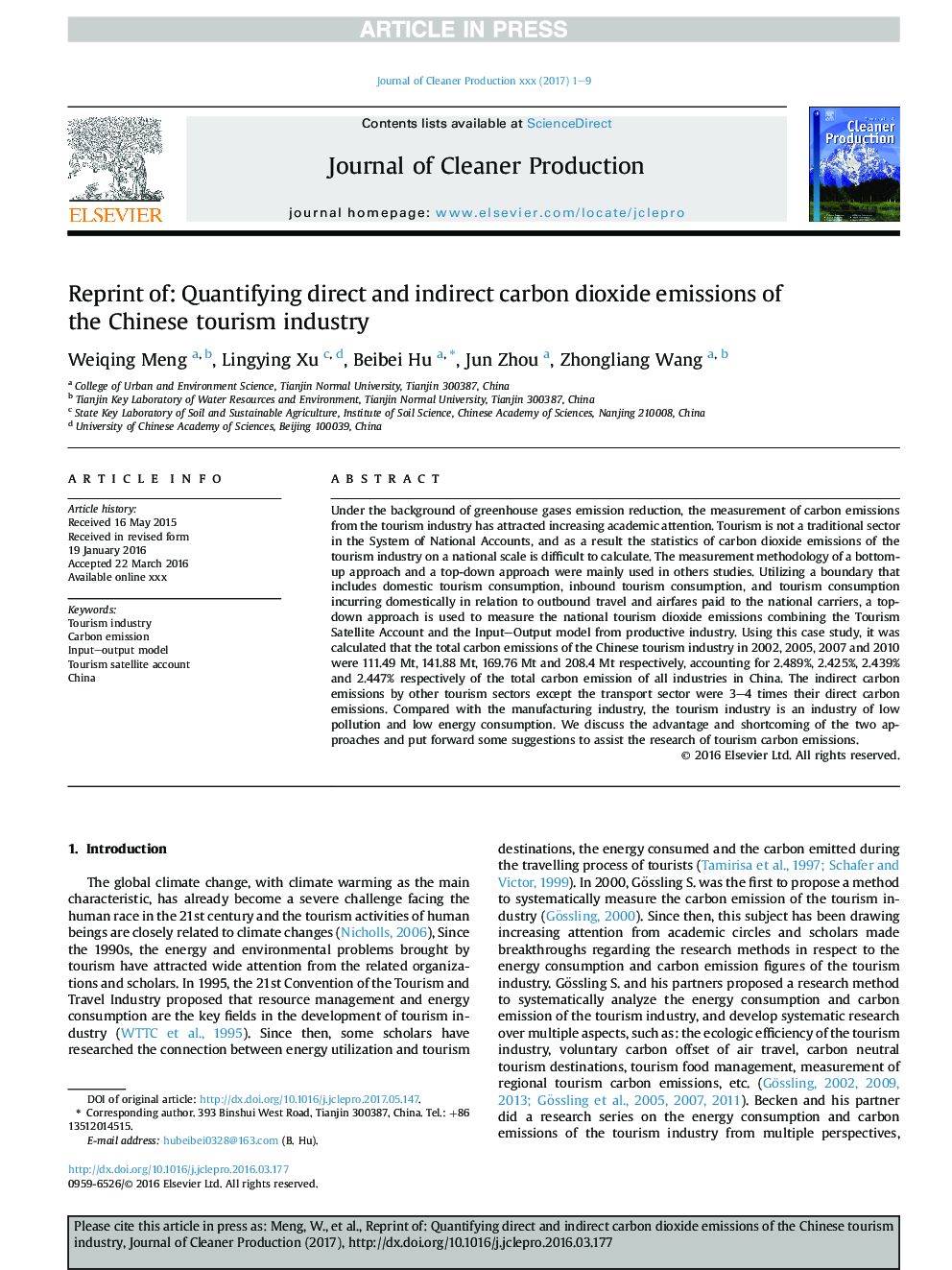| Article ID | Journal | Published Year | Pages | File Type |
|---|---|---|---|---|
| 5480558 | Journal of Cleaner Production | 2017 | 9 Pages |
Abstract
Under the background of greenhouse gases emission reduction, the measurement of carbon emissions from the tourism industry has attracted increasing academic attention. Tourism is not a traditional sector in the System of National Accounts, and as a result the statistics of carbon dioxide emissions of the tourism industry on a national scale is difficult to calculate. The measurement methodology of a bottom-up approach and a top-down approach were mainly used in others studies. Utilizing a boundary that includes domestic tourism consumption, inbound tourism consumption, and tourism consumption incurring domestically in relation to outbound travel and airfares paid to the national carriers, a top-down approach is used to measure the national tourism dioxide emissions combining the Tourism Satellite Account and the Input-Output model from productive industry. Using this case study, it was calculated that the total carbon emissions of the Chinese tourism industry in 2002, 2005, 2007 and 2010 were 111.49Â Mt, 141.88Â Mt, 169.76Â Mt and 208.4Â Mt respectively, accounting for 2.489%, 2.425%, 2.439% and 2.447% respectively of the total carbon emission of all industries in China. The indirect carbon emissions by other tourism sectors except the transport sector were 3-4 times their direct carbon emissions. Compared with the manufacturing industry, the tourism industry is an industry of low pollution and low energy consumption. We discuss the advantage and shortcoming of the two approaches and put forward some suggestions to assist the research of tourism carbon emissions.
Related Topics
Physical Sciences and Engineering
Energy
Renewable Energy, Sustainability and the Environment
Authors
Weiqing Meng, Lingying Xu, Beibei Hu, Jun Zhou, Zhongliang Wang,
